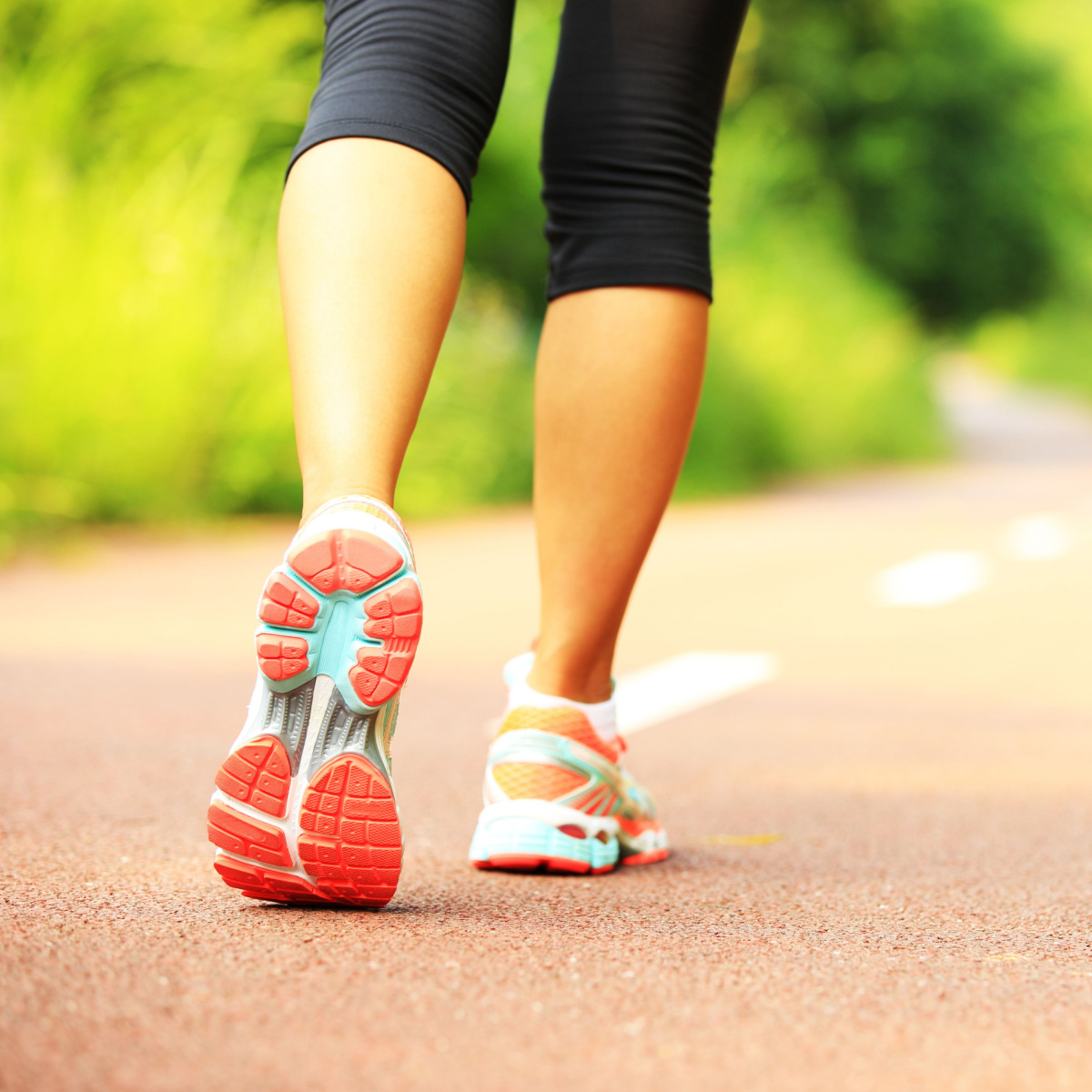This post has been updated since its original publish date of 03/28/2023 to include more expert insight.
Walking is a favorite form of cardio for many people. Not only is it convenient (you can seamlessly fit it into your daily routine!), but it’s an approachable, easy workout that requires little to no equipment. Plus, walking is a simple cardio that helps you burn calories. Just 30 minutes of brisk walking burns about 150 more calories a day. Of course, the more you walk and the quicker your pace, the more calories you’ll burn, but walking can be an approachable way for many to lose weight. But, how many miles would you have to walk every day to start losing weight?
We spoke with Amanda Brooks, a certified running coach, personal trainer, and author of the book Run to the Finish, and TJ Mentus, a certified personal trainer, who gave us tips and tricks on how you can up your walking game to shed extra pounds. She said that walking is an incredible and accessible form of exercise, but the miles you have to walk to actually lose weight can vary from person to person. It can depend on your weight, the slope, the speed, and walking time. Find out more below!


How Many Miles Do You Have To Walk Every Day To Lose Weight?
Running can be an effective cardio to increase calorie burn, but it's not necessary to lose weight. If it doesn't feel good and you won't stick with it, then it's better to simply increase your walking time and mileage. To lose weight by walking, Brooks says, "The actual mileage is going to vary for each person. I believe it's about the consistency of showing up daily and trying to progress in pace and distance. As you improve, start adding in more inclines or hills and trekking poles to increase the total calorie burn."
And, for women over 40 who want to incrementally work up to walking every day, Brooks has some suggestions. "Start out slowly so that you don't create muscle aches or fatigue that keep you from showing up the next day. It's not about one day of workouts, it's about doing it for many months and years," she says. "Remember that a walk with a friend can be a great way to get together, have more fun with your walk, and skip lunch out!"

However, Brooks also says that you have to focus on your diet too if you want to actually lose weight. "Diet is an integral part of any weight loss program. Your body [needs] nutrients to feel energized to stick to the workouts and needs enough protein to help with muscle repair and growth," she notes. That's why it's important to eat nutritious, low-carb meals rich in protein. Check out these protein-packed foods you can eat after every walk to promote muscle growth and calorie burn.

So, you might be able to lose weight by walking every day, but it depends on how long you walk, how intensely you walk, and, most importantly, what your diet's like. A combination of physical activity and cutting calories can help immensely with weight loss. And, when it comes to how many miles you should actually be walking every day to lose weight, Brooks says that it depends on each person. A good starting point according to popular fitness trackers and pedometers, and a 2016 study, 10,000 steps or 5 miles is ideal for optimal weight loss.

However, balance is also important. You never want to overdo exercise, it can increase your risk of aches, pains, and burnout. This is even true for a simple workout like walking. You'll want to start and end every work with light stretches to prevent cramping and injuries. If you're new to regular exercise, you may need to start out with short walks or walking at a light pace. Then, you can gradually build up to longer walks. Once you've lost weight, you'll want to consistently walk and even transition to running to keep the weight off.

Mentus adds that increasing your pace during walking can significantly enhance your calorie-burning potential. When you move faster, your body demands more energy to support the increased effort, leading to a higher calorie expenditure. So, whenever you're ready to level up, increase your pace for further weight loss and calorie burn.
"This is the simplest way to increase caloric burn. Burning calories is connected to your heart rate. The higher one’s heart rate, the more calories burned per minute of exercise. Often when someone isn’t burning as many calories as they would like from cardio it is because they are not pushing themselves hard enough and their bodies have gotten used to the same comfortable pace," Mentus says.

Seeking out an uphill terrain or utilizing the incline feature on a treadmill can be a smart strategy to elevate your calorie burn during walking. When you work against gravity by climbing an incline, your muscles engage more intensely, increasing the overall effort and calorie expenditure.
"Whether you prefer the great outdoors or the convenience of a treadmill, incorporating inclines into your routine is an effective way to intensify your walks or runs and accelerate your calorie-burning potential. If you have hilly terrain near you then I would suggest going on runs there every so often to challenge yourself more than on flat ground. You can get the same effect on a treadmill and alternate between running or walking on an incline then back to an even level," Mentus recommends.


























